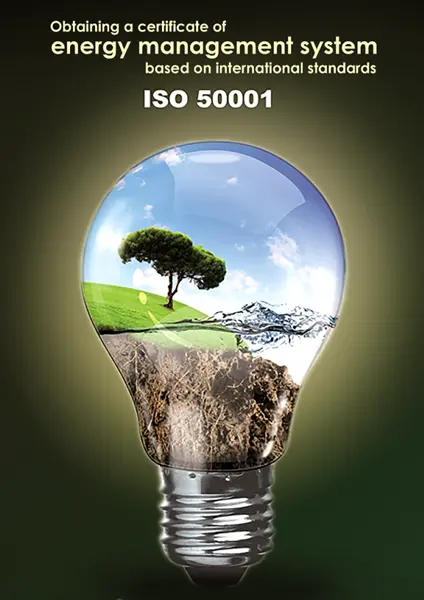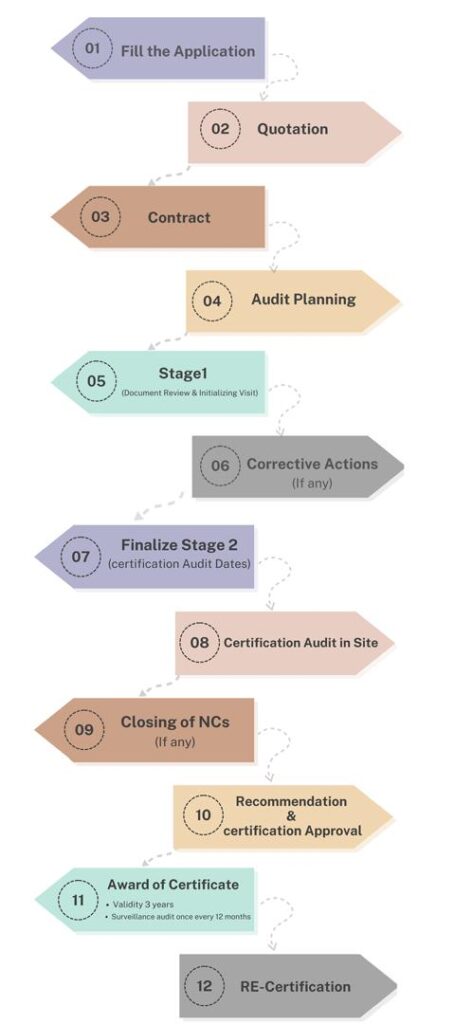In an era of rising energy costs and growing environmental concerns, organizations are under increasing pressure to optimize energy use and reduce their carbon footprint. ISO 50001:2018, the international standard for energy management systems (EnMS), offers a comprehensive framework for organizations to manage energy efficiently, save costs, and contribute to global sustainability goals.
This article explores the fundamentals of ISO 50001:2018, its benefits, practical implementation steps, and tips for achieving certification. Whether you’re a small business or a global enterprise, this guide will help you understand how to make energy management a strategic advantage.
What Is ISO 50001:2018?
ISO 50001:2018 is an internationally recognized standard that provides guidelines for establishing, implementing, maintaining, and improving energy management systems. It is designed for organizations of all sizes and industries to systematically optimize energy performance, enhance efficiency, and reduce greenhouse gas emissions.
The standard follows the Plan-Do-Check-Act (PDCA) cycle, ensuring continual improvement. ISO 50001:2018 aligns with other ISO standards like ISO 9001 (Quality Management) and ISO 14001 (Environmental Management), making it easier to integrate with existing systems

Why Is ISO 50001:2018 Important?
Energy efficiency is a key driver for operational efficiency and environmental sustainability. ISO 50001:2018 empowers organizations to adopt a proactive approach to energy management, delivering tangible benefits for both businesses and the planet.
Key Benefits of ISO 50001:2018
- Reduced Energy Costs Implementing the standard helps organizations identify and eliminate energy inefficiencies, leading to significant cost savings.
- Regulatory Compliance ISO 50001:2018 ensures adherence to energy-related legal and regulatory requirements, reducing risks and liabilities.
- Enhanced Reputation Certification showcases your commitment to sustainability, building trust among customers, investors, and stakeholders.
- Improved Operational Efficiency By optimizing energy use, organizations can enhance overall productivity and reduce downtime.
- Environmental Impact The standard supports global efforts to combat climate change by minimizing greenhouse gas emissions.
- Global Recognition ISO 50001:2018 certification is recognized worldwide, making it a valuable credential for businesses seeking international growth.
Key Principles of ISO 50001:2018
The standard is built on several core principles that guide organizations in effective energy management:
- Energy Policy Establishing a clear policy that outlines the organization’s commitment to energy efficiency and performance.
- Energy Planning Identifying energy baselines, consumption patterns, and areas for improvement.
- Operational Control Implementing processes and procedures to achieve energy objectives.
- Performance Evaluation Monitoring, measuring, and analyzing energy performance to identify opportunities for improvement.
- Continual Improvement Regularly reviewing and enhancing the energy management system to achieve sustained benefits.
Steps to Implement ISO 50001:2018
- Understand the Standard
Familiarize yourself with ISO 50001:2018 requirements and how they align with your organization’s energy goals. Consider training sessions or engaging an ISO consultant for deeper insights.
- Conduct an Energy Review
Assess your current energy performance to identify inefficiencies, energy baselines, and significant energy uses (SEUs).
- Develop an Energy Policy
Create a formal policy that defines your organization’s energy goals, including commitments to continuous improvement and legal compliance.
- Set Objectives and Targets
Establish measurable energy objectives and performance targets that align with your policy and organizational goals.
- Create an Action Plan
Develop an action plan to achieve your objectives. This may include energy-saving initiatives, process improvements, or upgrading equipment.
- Implement Operational Controls
Establish procedures for monitoring and controlling energy use in daily operations.
- Train Employees
Educate employees about their roles in achieving energy management objectives and encourage energy-conscious behavior.
- Monitor and Measure
Track energy performance regularly using key performance indicators (KPIs) to ensure progress toward targets.
- Conduct Internal Audits
Regular audits help identify non-conformities and provide opportunities for improvement.
- Certification Audit
Engage a certification body to evaluate your energy management system and issue an ISO 50001:2018 certificate upon compliance.
Examples of ISO 50001:2018 in Action
Case Study: Manufacturing Sector
A manufacturing company implemented ISO 50001:2018 to address high energy costs. By optimizing production processes and upgrading to energy-efficient machinery, they reduced energy consumption by 25%, saving $100,000 annually.
Case Study: Hospitality Industry
A hotel chain adopted ISO 50001:2018 to manage energy use across multiple locations. Installing smart thermostats and switching to LED lighting resulted in a 30% reduction in electricity bills.
Practical Tips for ISO 50001:2018 Implementation
- Use Energy Management Software Leverage technology to automate data collection, analyze energy performance, and track progress.
- Engage Stakeholders Involve employees, suppliers, and contractors in energy-saving initiatives to create a culture of sustainability.
- Set Realistic Goals Start with achievable energy objectives and scale efforts as your system matures.
- Monitor Utility Bills Regularly review utility bills to identify unexpected spikes or trends in energy use.
- Invest in Energy-Efficient Equipment Replace outdated machinery with energy-efficient alternatives to achieve long-term savings.
Challenges and How to Overcome Them
- Resistance to Change
Employees may resist new energy-saving measures. Address this by emphasizing the benefits and providing training.
- High Initial Costs
Upfront investments in energy-efficient equipment can be a barrier. Focus on projects with a high return on investment (ROI) to offset costs.
- Data Collection
Tracking energy performance can be complex. Use automated systems to simplify data collection and analysis.
Conclusion
ISO 50001:2018 is a powerful tool for organizations committed to energy efficiency and sustainability. By implementing this standard, businesses can reduce costs, enhance operational efficiency, and contribute to a greener future.
Start your journey toward ISO 50001:2018 certification today to unlock the full potential of energy management and position your organization as a leader in sustainability.
Certification Process
1- Completion of information related to the company name, company activities, the number of staff per work shift, website address, and branches.
2- Announcement of costs related to the requested certification issuance process.
3- Preparation and approval of the contract for implementation.
4- Planning the audit process and notifying the client for audit process.
5- reviewing documents to identify the client strengths and weaknesses in comparison to the established documentation.
6- Corrective actions for potential weaknesses.
7- Final planning for conducting the audit, registration, and certification issuance.
8- Conducting the on-site audit process at the client by the specialized team of the certifying company.
9- Corrective actions for potential weaknesses in the execution of the organization’s processes.
10- Recommendation for the issuance of a certification related to the client to the head office.
11- Achieving the related certification.
12- Renew after three years.


